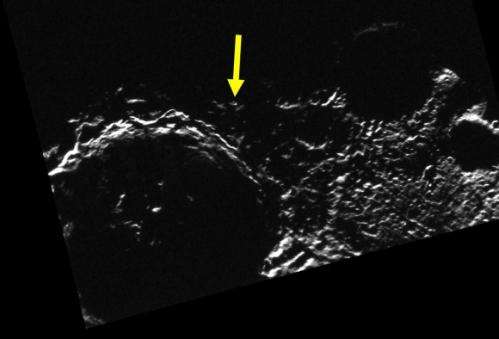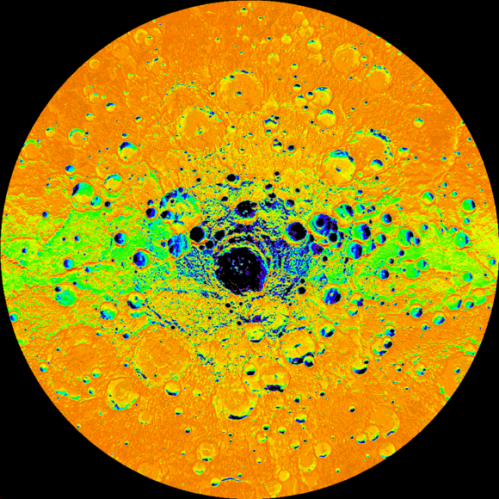This spot on Mercury (almost) never goes dark

Mercury, traveling in its 88-day-long orbit around the Sun with basically zero axial tilt, has many craters at its poles whose insides literally never see the light of day. These permanently-shadowed locations have been found by the MESSENGER mission to harbor considerable deposits of ice (a seemingly ironic discovery on a planet two-and-a-half times closer to the Sun than we are!*)
But if there are places on Mercury where the Sun never shines (insert butt joke here) then there may also be places where it always does. That's what researchers are looking for in illumination maps made from MESSENGER data… and they're getting closer.
The image above shows a region near Mercury's south pole. The yellow arrow points to the closest thing to a true "peak of eternal light" found thus far on Mercury, a point that receives sunlight about 82% of the time—almost constantly illuminated.
From the JHUAPL :
Studies of the illumination conditions near the north and south poles of Mercury are of interest because they can be used to determine locations of permanent shadow, extremely cold places where ice deposits lurk. However, the illumination maps also reveal the locations that receive the maximum duration of sunlight during a Mercury solar day.
A "peak of eternal light" that is illuminated continuously for an entire solar day would be a favorable target for a lander, because solar power would be available all the time. So far, no such peak of eternal light has been identified at Mercury's south pole.
The spot that get the most illumination (about 82%), is located at 89° S, 50.7° E.

This image was acquired as part of MDIS's campaign to monitor the south polar region of Mercury. By imaging the polar region approximately every four MESSENGER orbits as illumination conditions change, features that were in shadow on earlier orbits can be discerned and any permanently shadowed areas can be identified after repeated imaging over one solar day.
The top image above was acquired on Dec. 24, 2011. The large crater is Chao Meng-Fu, about 129 km (80 mi.) in diameter. Credit: NASA/Johns Hopkins University Applied �鶹��Ժics Laboratory/Carnegie Institution of Washington.
Source:





















